According to a new index, Říčany is the best place to live and offers the highest quality of life in the Czech Republic, followed by Prague and Brandýs nad Labem.
Říčany, a small town of over 16,000 souls in the Central Bohemian region located on the south-eastern outskirts of Prague, has – once again – been ranked as the place offering the best quality of life in the Czech Republic.
The ranking, put together by data analysis company Obce v Datech in cooperation with consulting firm Deloitte in order to help municipalities identify possible deficiencies and people decide where to live, ranks over 200 Czech municipalities according to a number of criteria (health, environment, work, education, services, safety, transport, leisure, housing, etc.).
According to Deloitte manager Filip Neterda, “our major goal is to actually help the cities to get their strategic priorities right, to better target the areas into which public investment is required […] We would be really happy if it could serve as a tool for public investment at the level of a city”.
As a whole, the country’s two largest cities, Prague and Brno, along with their respective surrounding municipalities, performed better in the quality of life ranking.
The lowest scores were, on the opposite, more often found in municipalities located in the country’s north-western and north-eastern regions, mainly in the surrounding areas of Ostrava and Usti-nad-Labem.
Here are the top 10 best places to live in the Czech Republic, according to the index:
- Říčany – Central Bohemia
- Prague – Prague
- Brandýs nad Labem-Stará Boleslav – Central Bohemia
- Hustopeče – South Moravian
- Černošice – Central Bohemia
- Kuřim – South Moravia
- Brno – South Moravia
- Židlochovice – South Moravia
- Třeboň – South Bohemia
- Pelhřimov – Vysočina Region
The Czech Environment Ministry recently announced plans to enforce compulsory textile waste collection from 2025.
The initiative, announced at a press conference by environment minister Petr Hladik, aims to align with the European directive on waste management.
Producers will assist municipalities in bearing the collection costs.
The priority is to foster textile reuse and efficient recycling practices, the minister said. Textiles often get discarded now into mixed waste bins, significantly affecting recycling efforts.
The proposed strategy targets enhancing citizens’ engagement by setting up collection points across municipalities.
Nearly 10,000 textile containers dot the Czech Republic, but the existing Waste Act merely mandates collection points, not recycling.
Hladik underscored the lack of financial compensation to municipalities for establishing these collection points under the previous government, according to a Czech media outlet.
The aim is to expand beyond containers, integrating collection points in varied locations like town halls and retail outlets.
Recycling fees could potentially be shared between sellers and manufacturers, with eventual implications for consumer pricing.
There has been a yearly rise in textile waste production in the country. Around 180,000 tonnes of textiles are discarded annually, with a mere 3-4 per cent entering mixed waste bins and 39,000 tonnes being sorted for recycling.
The Old Prague Club opposes the proposal to transform the Main Railway Station, arguing against the demolition of a significant portion of the new concourse.
The club contends that the station is a valuable structure, describing it as “one of the finest post-war buildings not only in Prague but in the entire Czech Republic,” as stated in its official release.
The proposed design, selected through an architectural competition by the Railway Administration (SŽ), Prague, and the Prague Transport Company, suggests the removal of the front section of the hall, replacing it with an open space covered with a wooden structure.
In its statement, the club emphasizes the check-in hall as an exceptional work by the architectural team of Jan Bočan, Josef Danda, Zdeněk Rothbauer, and Jan and Alena Šrámek.
Additionally, it highlights the hall’s protected status as a monument, along with the historic Fanta building, according to the Ministry of Culture. The club asserts that this information should have been communicated to the competition participants promptly to ensure appropriate adjustments to their designs.
The club finds the proposed demolition of a substantial part of the hall perplexing, especially considering its renovation over ten years ago at a cost of CZK 1.2 billion. Moreover, it expresses concerns that replacing the hall with an open pergola could diminish the comfort for passengers.
The winning proposal, by Henning Larsen Architects from Copenhagen, envisions the transformation of the new hall, adjacent Vrchlický Sady, and the tram line planned from the National Museum around the station to Bolzanova street. The central element of the design is a large wooden structure arching over the new concourse towards Vrchlický Sady.
The new area in front of the station is proposed to connect to the main thoroughfare via a wide staircase, followed by a new crossing over the busy road to the Fant building.
The winning studio will develop its proposal into an architectural study, open to public commentary. However, the proposal has faced criticism since its publication on Monday, prompting an online petition against it, with over 1,800 supporters thus far.
Hebe, the cosmetics and body care-focused drugstore giant, is set to open its first physical store in the Czech Republic, challenging rivals Teta, dm-drogerie markt, and Rossmann, while also targeting the position of Notino perfume stores.
The expansion includes stores in Prague’s Harfa and Westfield Černý Most, scheduled to commence operations on December 6, 2023.
Despite strong competition in the Czech market, Hebe plans further expansion in 2024, with store sizes ranging from 300 to 500 square meters.
Hebe’s range of products includes mainly cosmetics and accessories: make-up, body, facial and hair care, perfumes and deodorants.
The cosmetic offer is complemented by household chemistry, products for children and pregnant women and mothers, jewelry and accessories, home decoration products, tights and food (snacks).
Hebe was founded in 2011 by the international retail group Jerónimo Martins, quickly becoming one of the largest beauty chains in Poland, with 290+ brick-and-mortar shops and an online shop.
In 2021, they launched hebe.com, with the aim of bringing affordable beauty products to customers across Europe where you will find over 18,000 products from all over the globe.
On Monday, November 27, hundreds of industrial enterprises will join a strike against the government’s actions, halting production. About a million workers are expected to participate in the protest.
The march will lead from Prague’s Rudolfinum to Malostranské náměstí, where a rally will take place starting at 1pm.
On the same day, teachers and other educational institution staff will also protest, leading to the closure of many schools in the Czech Republic.
Why is the strike happening?
Teachers in Czechia are dissatisfied with low pay, earning around CZK 36,000 monthly, below the national average. In 2022, salaries for all school staff (including principals and administrators) saw minimal growth, averaging CZK 48,200, worsened by underfunding in the education sector. Support staff, like cooks and janitors, also express discontent, facing potential wage cuts of 2 percent in the 2024 education budget. Concerns arise about the impact on services like school meals.
At the automotive company Škoda Auto, production will be halted at all plants for two hours with union activists expecting at least 8,000 employees to participate in the strike.
This was announced on Tuesday at a press conference by the chairman of the KOVO union, Roman Dürch, and the leader of the automaker’s unions, Jaroslav Povšík.
“Despite our priority being meetings at the plants, we have agreed that a large number of our members will come to the demonstration in Prague at Malostranské náměstí at 1:00 PM, where we will express our protest against the government and its actions,” said Dürch.
This will be the largest protest since 2015, running parallel to a general strike. In Mladá Boleslav, it will begin with a rally on Wenceslas Clement Avenue.
Protesters from both the morning and afternoon shifts will work one hour less. The rally will start at 12:00 PM, with the main program at 1:15 PM.
The union is counting on active public support.
At present, fewer than a dozen enterprises in the industry have joined the protest, planning to stop production for an hour or less.
A lengthy trolleybus has been delivered to Prague, marking a significant addition to the city’s transportation.
The vehicle in question is the first Škoda Solaris-24m trolleybus, obtained by Prague’s transport company. Scheduled to start operations in 2024, it will run between Václav Havel Airport and Nádraží Veleslavín metro station.
This new addition will be showcased at the Czechbus exhibition hosted at the PVA Expo from November 21 to 23. A total of 20 Škoda Solaris-24m trolleybuses have been procured by the city, replacing buses on the current route 119 (to be renumbered as route 59).
Construction of the contact line, connecting the metro to the airport, began in February and is expected to conclude in early 2024.
The network’s overall length will be 11.6 kilometers, covering only half of the metro-airport-metro route with intermittent segments. In unequipped sections, the trolleybus will operate as an electric bus utilizing built-in batteries.
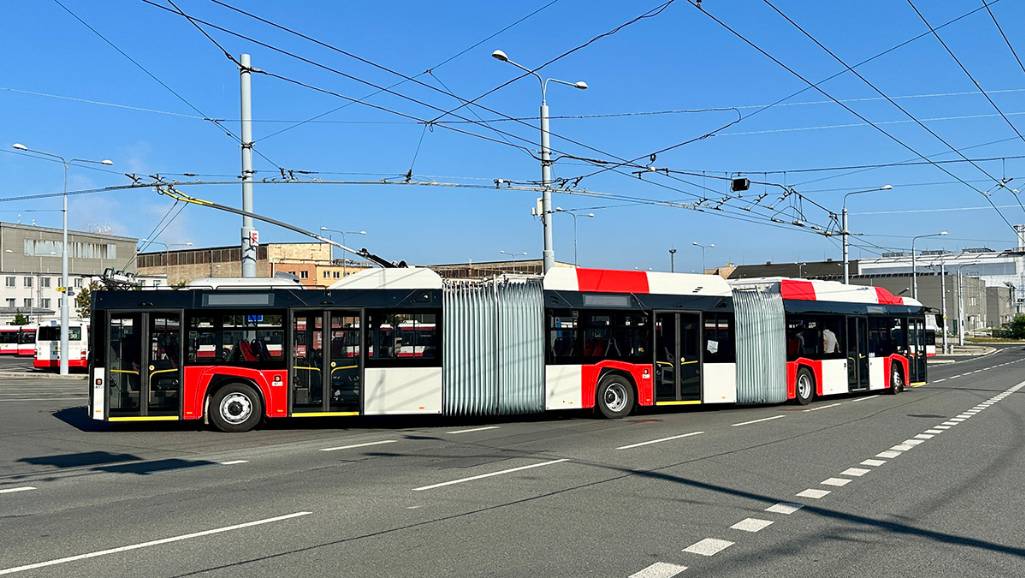
Impressively, the articulated Škoda Solaris-24m spans three sections and measures 24.7 meters in length. It features electronic assistance for the driver during cornering, controlling the position of the rear wheels.
Equipped with two electric motors boasting 217 horsepower each, the trolleybus includes a battery designed for 12 kilometers of autonomous travel at maximum load.
With a passenger capacity of 179 people (including 52 seats), the trolleybus is fully low-floor and barrier-free. Noteworthy features include a climate control system, video surveillance, and LED lighting.
Family Brewery Bernard has been awarded the title of the best brewery by the Czech Association of Friends of Beer (Sdružení přátel piva) in 2023.
It received the prestigious Pivovar roku award for maintaining consistently high product quality, making strategic investments, and continuously improving production.
Pivovar Kamenice secured the second position, while Pivovar Únětice claimed the third spot.
The Association of Friends of Beer, comprising the largest Czech breweries, mini-breweries, and industry professionals, determines the best brews and producers through a poll among its 1,500 members.
In the mini-breweries category, the top performers were:
- Pivovar Rampušák
- Pivovar Volt
- Pivovar BadFlash
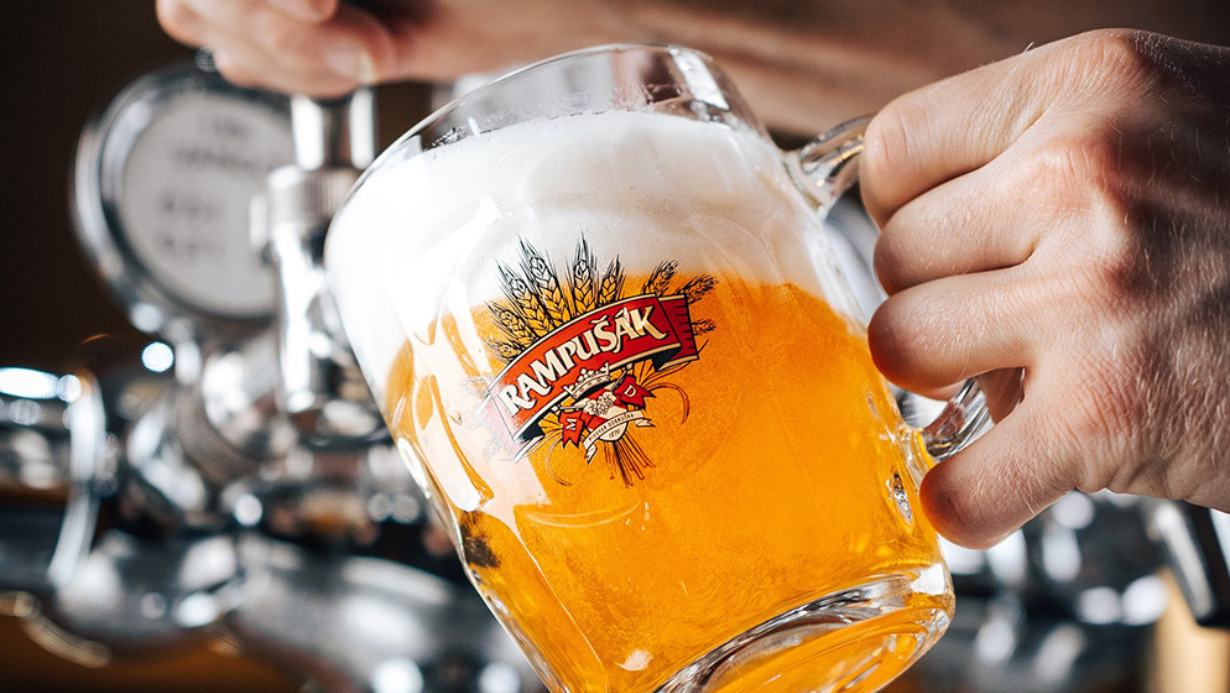
Experts also singled out the best beer brands in various categories:
Světlé výčepní pivo or “desitka” (beer with an initial wort extractivity of 10 per cent):
- Hektor, světlé výčepní (Řemeslný pivovar CLOCK)
- Fabián desítka (Pivovar Hostomice)
- Bernard desítka (Rodinný pivovar Bernard)
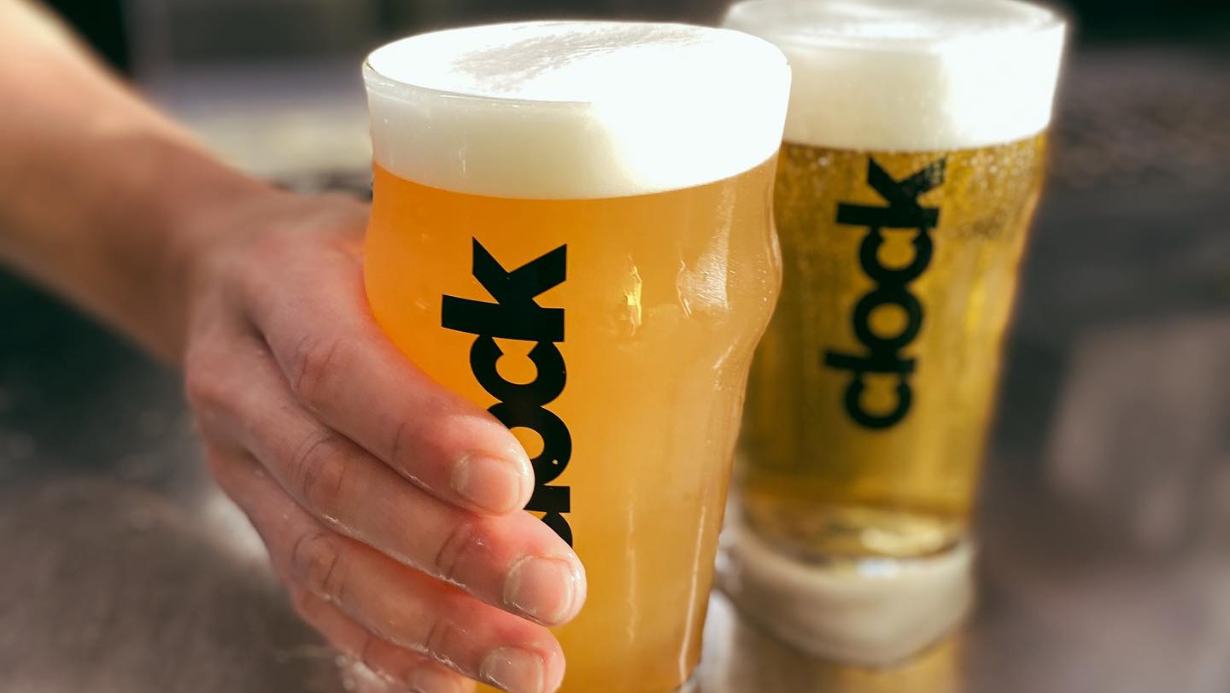
Světlý ležák (light lager):
- Prostě Světlý Ležák (Pivovar BadFlash)
- Fabián 12%, světlý ležák (Pivovar Hostomice)
- Muflon, světlý ležák 11° (Pivovar Kunratice)
Strong beer (13% and above):
- Primátor 16 Exkluziv (Pivovar PRIMÁTOR)
- Dalešické Májové 13% (Pivovar Dalešice)
- Festpils Konspirátor (Pivovar Ovipistán, Pivní rozjímání a létající sládek Aleš Dvořák)
Tmavé and polotmavé pivo (dark and semi-dark beer):
- Černá Svině 13° (Pivovar Kostelec nad Černými lesy)
- Sv. Norbert Tmavý ležák (Pivovar Strahov)
- Bernard, Černý ležák s jemnými kvasnicemi (Rodinný pivovar Bernard)
Seničné pivo (wheat beer):
- Hefe Weizen 11% (Akciový pivovar Libertas)
- 12 Sv. Jana Nepomuckého, Weissbier (Pivovar Zlatá Kráva)
- Sv. Norbert Weizen (Pivovar Strahov)
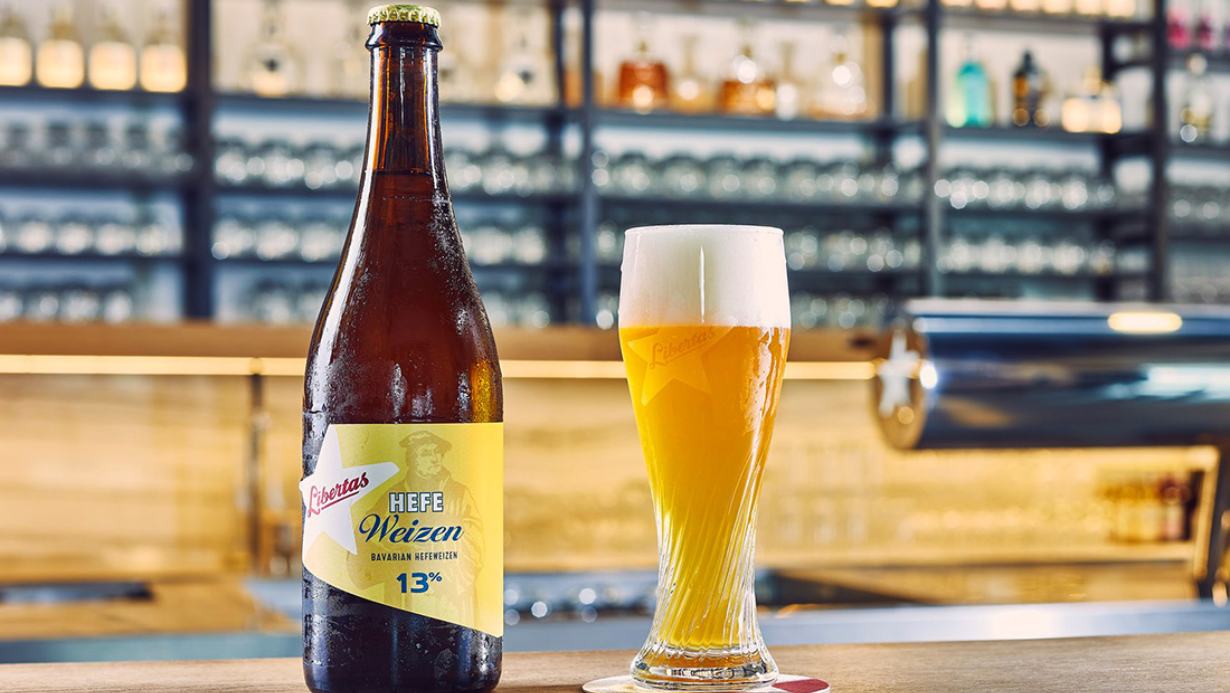
Světlé, svrchně kvašené pivo (light beer of top fermentation):
- Volt Baterka (Pivovar Volt)
- Bernard, Bohemian Ale (Rodinný pivovar Bernard)
- Bernard IPA (Rodinný pivovar Bernard)
Svrchně kvašené polotmavé a tmavé pivo (semi-dark and dark beers of top fermentation):
- Torpid Mind, Russian Imperial Stout (Pivovar BadFlash)
- Zhůřák, Extreme Asfalt stout (Pivovar Zhůřák)
- Máša stout 11% (Pivovar Máša)
Kyselé pivo (sour beer):
- Hangár, Sršeň bez příchutě (Létající pivovar Hangár)
- Nachmelená opice, Goséčko 11% (Pivovar Nachmelená opice)
- Obora Jahoda (Pivovar Obora)
Residents and guests of Prague will have the opportunity to visit four branches of the National Gallery in Prague for free.
The event will take place on Friday, 17 November, from 10:00 to 18:00, coinciding with the bank holidays – the Day of the Struggle for Freedom and Democracy.
This special offer is applicable to all age categories, including Czech citizens and foreigners alike, as stated on the gallery’s official website.
The following exhibitions will be accessible without charge:
- Staří Mistři I (Schwarzenberský palác) – Old Masters I (Schwarzenberg Palace)
- Staří Mistři II (Šternberský palác) – Old Masters II (Šternberg Palace)
- Středověké umění v Čechách a střední Evropa 1200-1550 (Klášter sv. Anežky České) – Medieval Art in Bohemia and Central Europe 1200-1550 (Convent of St. Agnes of Bohemia)
- 1796-1918: Umění dlouhého století (Veletržní palác) – 1796-1918: Art of the Long Century (Trade Fair Palace)
- 1918-1938: První republika (Veletržní palác) – 1918-1938: First Republic (Trade Fair Palace)
- 1956-1989: Architektura všem (Veletržní palác) – 1956-1989: Architecture for All (Trade Fair Palace)
- 1939-2021: Konec černobílé doby (Veletržní palác) – 1939-2021: End of the Black and White Era (Trade Fair Palace)
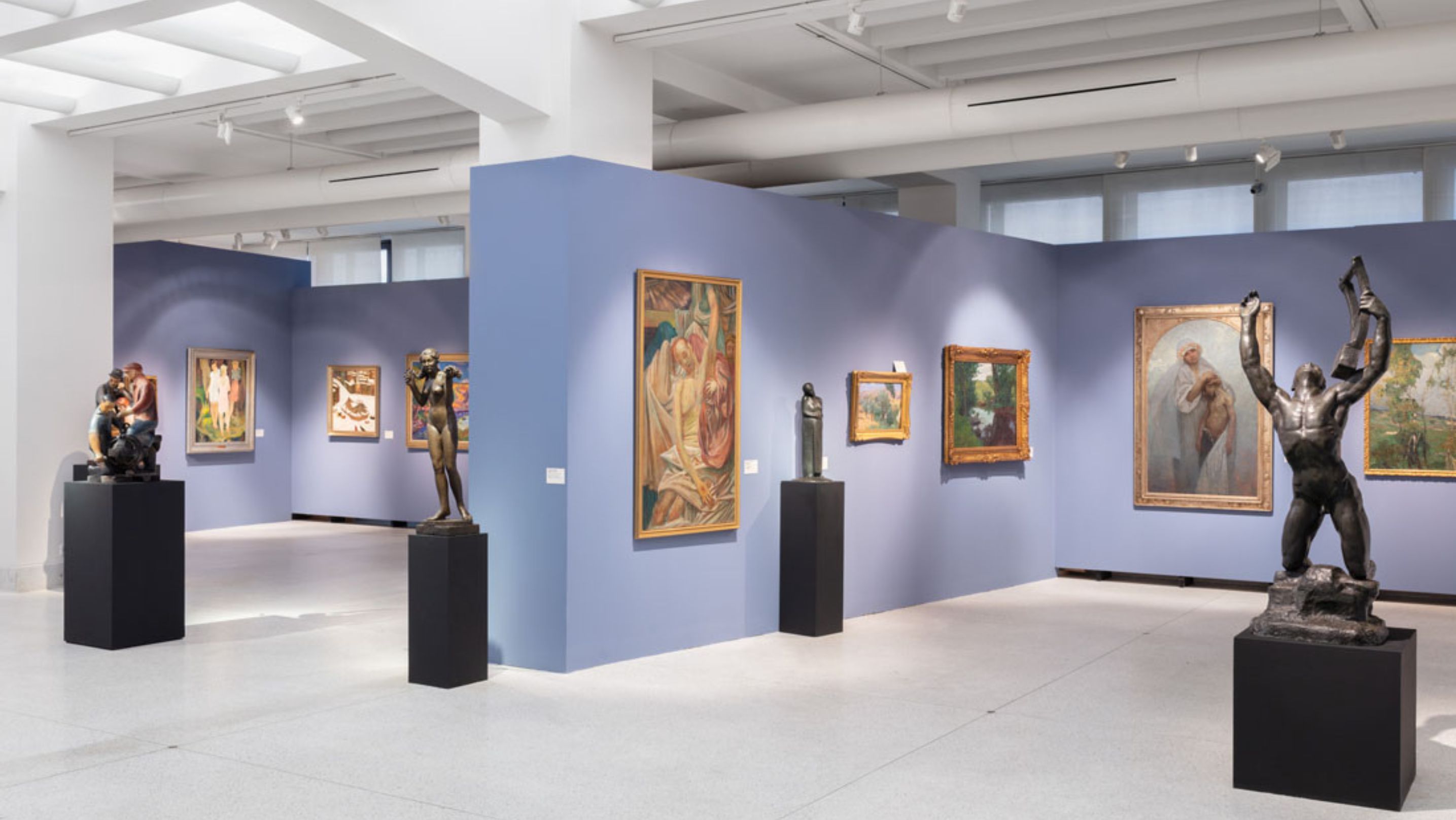
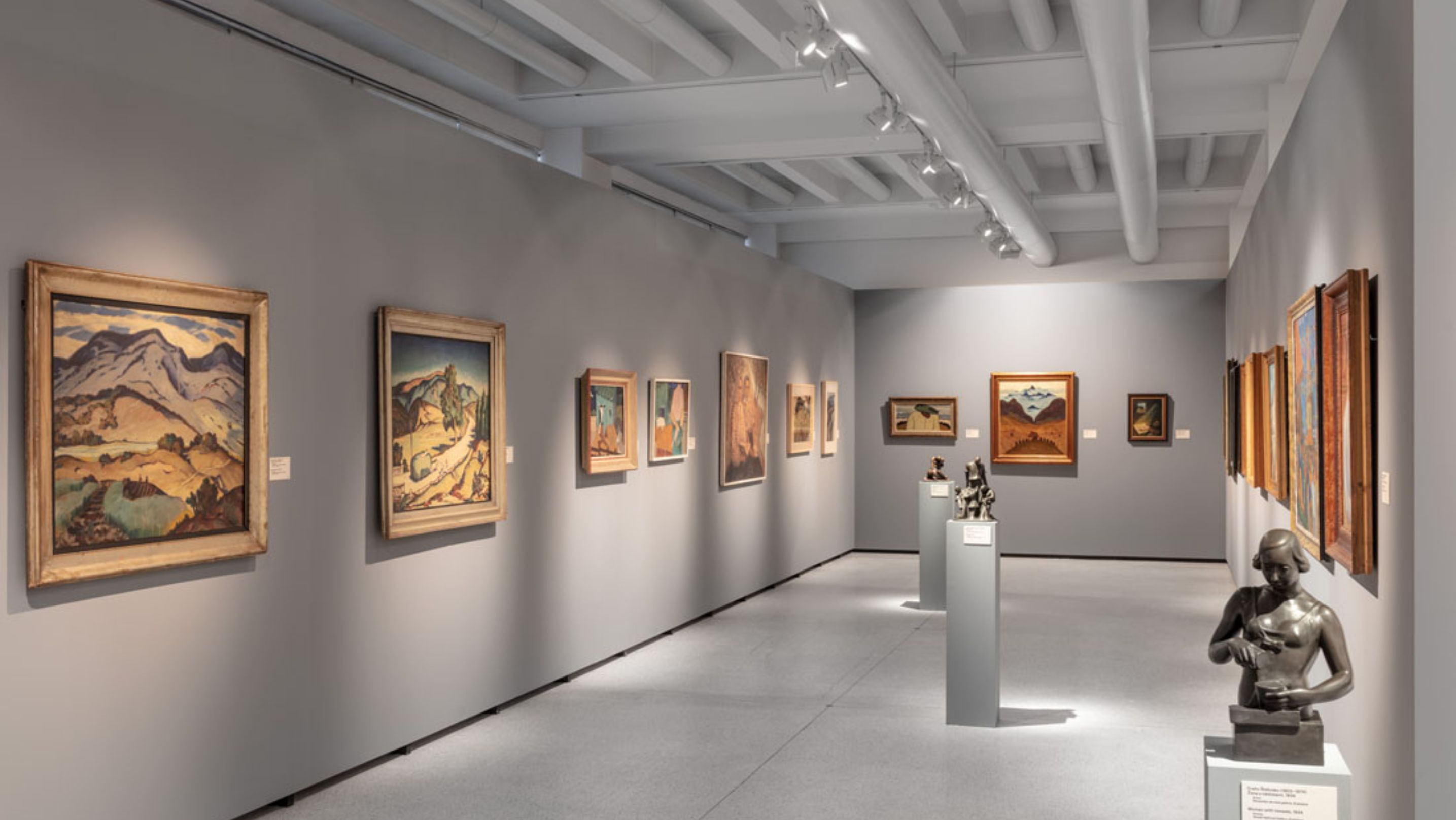
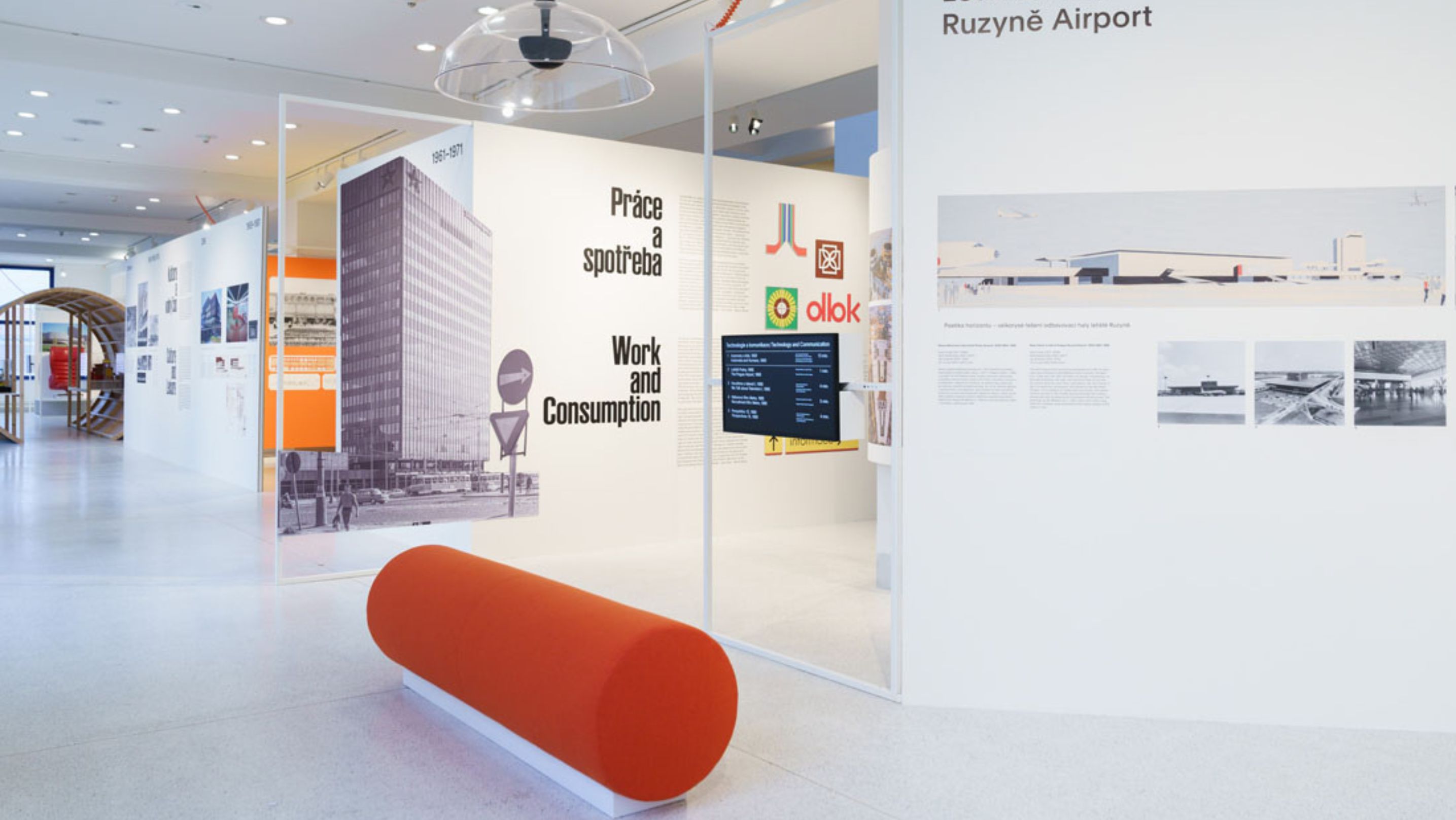
The Czech economy unexpectedly contracted on a quarterly basis in the July-September period, preliminary statistics office data showed on Tuesday, as a drop in foreign demand pulled the country back towards recession.
Czech gross domestic product declined 0.3% in the third quarter, missing a median expectation that it would stagnate and contracting by more than all but the most pessimistic analyst had forecast in a Reuters poll.
On a year-on-year basis, the economy shrank 0.6%, deeper than the median forecast for a 0.3% drop.
The economy had pulled out of a recession in the first half of 2023 but is struggling to recover from last year’s surge in inflation, with consumer activity still weak and firms reporting shrinking order books from domestic and foreign clients.
The statistics office did not break down the preliminary data but said foreign demand negatively impacted the quarterly result, while domestic demand stagnated.
The Czech data is the first insight into third-quarter growth in central Europe, where Hungary, Poland and others have also felt the impact of soaring prices for energy, food and other goods and are slow to recover.
“This weakness in the (Czech) economy also increases the likelihood that the central bank will start an easing cycle at its meeting later this week,” said Nicholas Farr, an emerging Europe economist at Capital Economics, adding that a full-year contraction was also possible.
The Czech National Bank will meet on Thursday with analysts split before Tuesday’s data over whether policymakers will deliver a first interest rate cut after hiking rates to more than two-decade highs in 2021-2022.
Although inflation eased to below 7% in September after peaking at 18% last year, it has hammered real wages, which have fallen for seven straight quarters and dragged on consumer activity.
Purchasing managers’ readings of manufacturing sentiment also remain in contraction territory, while the key car sector saw a year-on-year drop in output in September as it works through supply issues.
“The domestic economy remains on the edge of recession and is the only one in the European Union to not yet reach its pre-pandemic GDP level from 2019,” said Jakub Seidler, chief economist with the Czech Banking Association.
He said a mild recession was possible and that next year’s outlook for growth will also shift lower, especially with weakness in main export market Germany and the effects of the Czech government’s deficit-cutting measures.
The gourmet pop-up series at the Holešovice Market continues to ride the Mexican wave, offering the sharp flavors of the Central American country as part of the second annual Día de los Muertos!
During the day, visitors can indulge in a paradise of tacos, guacamole, chili con carne, and nachos. The festivities include workshops and a family-friendly program, culminating in an evening tequila party celebrating both life and death.
All of this awaits you on 2 November, starting from 11:00 am at Holešovice Market Hall 17/13 and the adjacent cortege.
Don’t miss out on the sun-drenched flavors, vibrant carnival masks, and performances by United Flavour, Mariachi Azteca de Praga, Naomi Villegas, Lozt Mezcal, and DJ Gadjo, in this unique celebration of life and the afterlife.
In the evening, join the tequila party, the highlight of the event. Families can participate in afternoon workshops, creating masks for the evening festivities. As night falls, dance to the rhythms of the south and celebrate the spirits of the living and the departed.
“Last year marked the first Mexican Day of the Dead at the Market. Following a sold-out inaugural edition, we’ve expanded the event this year, offering an all-day gastronomic pop-up featuring a variety of South American specialties and a free children’s program in Hall 13,” said Michal Tošovský, Programme Director of the Holešovice Market Hall.
Line-up:
❁ 19:00 – 19:40 | DJ Gadjo.cz
❁ 19:40 – 20:00 | Opening
❁ 20:00 – 20:30 | Mariachi Azteca de Praga & Naomi Villegas
❁ 20:45 – 21:45 | Lozt Mezcal
❁ 21:45 – 22:15 | DJ Gadjo.cz
❁ 22:15 – 23:15 | United Flavour
❁ 23:00 – 00:30 | DJ Gadjo.cz



The Bohemian Burlesque Festival, now in its seventh edition, stands as the largest burlesque event in the Czech Republic.
As one of the pioneers of this genre in the Czech Republic, the production company Bohemian Burlesque is celebrating its 10th anniversary this year. To mark this milestone, they are presenting the seventh edition of the country’s largest burlesque event, the Bohemian Burlesque Festival.
The festival spans from September 20th to September 24th, taking place in three cities and featuring five events.
Following the opening event in Ostrava, the festival heads to Brno for its traditional Thursday evening at the Cabaret des Péches. On Friday, the production moves to Prague for a gala evening in the new space of the historic Rokoko Theatre.
Saturday, September 23rd, is packed with excitement as the festival offers two events. From 12 to 6 p.m., visitors can explore the Bohemian Market, where numerous vendors will showcase vintage and retro fashion and accessories, along with a retro clothing bazaar.
The day includes over 20 burlesque performances, parades, a discussion on body image and self-esteem, as well as a lecture on the history of lingerie. In the evening, the festival concludes with the Bohemian Queen Night competition. Both events traditionally take place in the Autoclub of the Czech Republic’s first republican space on Opletalova Street.
On Sunday, attendees have the opportunity to participate in workshops with the festival’s main guests.
This year, the festival welcomes a record-breaking 75 performers from 18 countries, spanning from Australia and the USA to South Africa, Brazil, Canada, and various European countries.
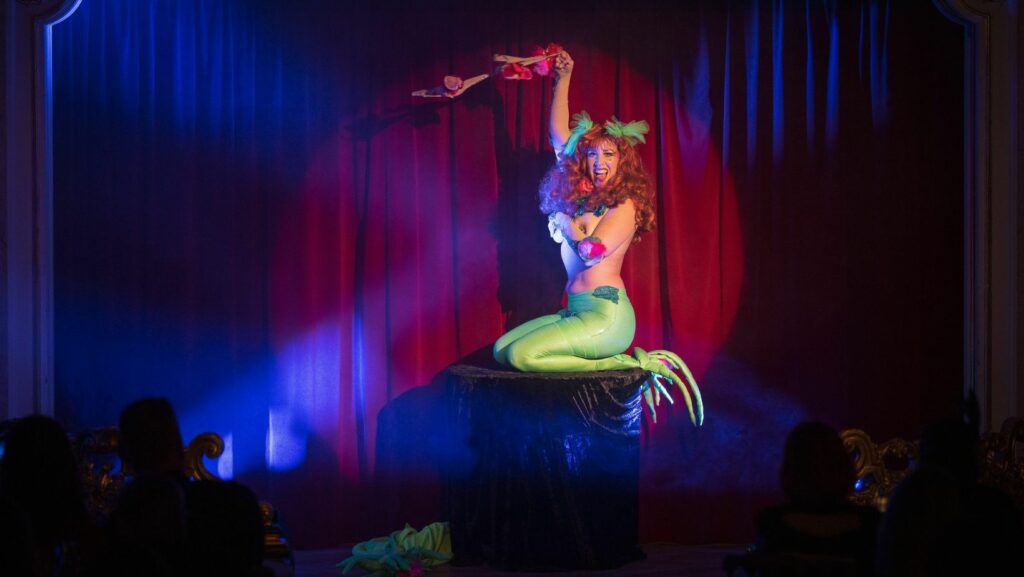
The headliners include Jessabelle Thunder from the USA and the Italian burlesque legend Albadoro Gala. Celeste O’Lea from Canada, last year’s Bohemian Princess title holder, will also be present, passing the title to her successor during Saturday night’s show and serving on the jury that will select the new Bohemian Queen for 2023 from among the 13 contestants.
Producer Lucie Čihánková, also known as Angelica G. L´Amour, explains the difference between the festival and a regular burlesque show.
“At the festival, each show comprises up to 20 acts, and every performer takes the stage only once. This allows the audience to experience a diverse range of burlesque styles from different parts of the world, all performed by world-class artists. The festival has been bringing international stars to the Czech Republic as guests for the past decade, making it an extraordinary opportunity to be captivated by the enchanting world of burlesque. Don’t miss it!”
For tickets, visit www.smsticket.cz
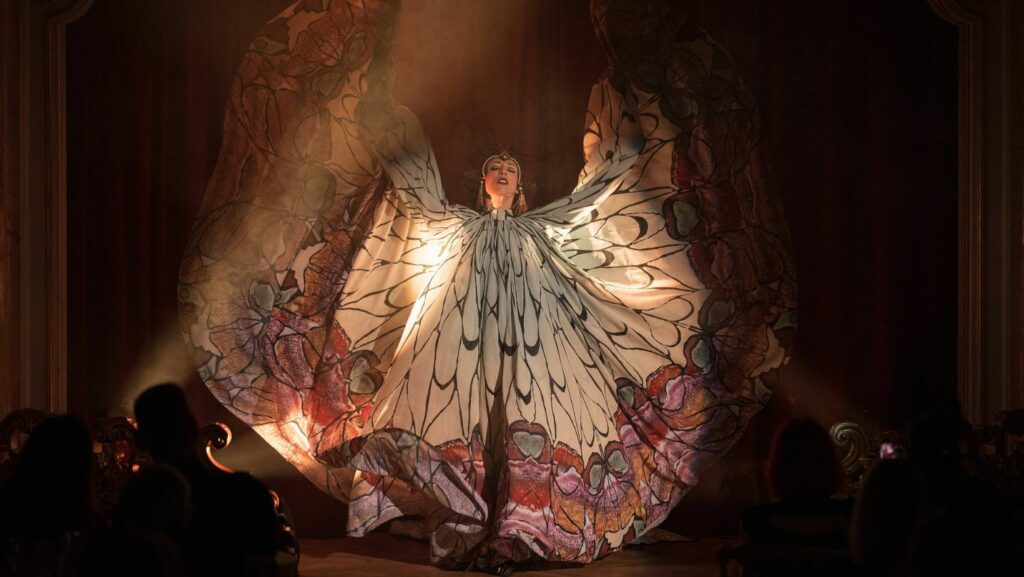
Tram traffic will be disrupted on some of the busiest sections in Prague.
The Prague Public Transit Company (DPP) will repair tram lines between náměstí Míru and Flora from September 18 to 29.
The measure will affect routes 10, 13, 16, 23, 24, 30 and 91. Some of them will be canceled, others will be detoured.
Compensation buses will not be introduced, while bus route 101 will be reinforced on the Viktoria Žižkov – Koh-i-noor section.
In addition, a temporary tram route 30 will be put in place, which will include the following stops: Sídliště Řepy – Motol – Kotlářka – Kavalírka – Anděl – Zborovská – Palackého náměstí – Karlovo náměstí – I. P. P. P. Pavlova – Náměstí Míru – Jana Masaryka – Čechovo náměstí.
Public transport numbers still have not recovered to pre-covid levels
The number of people using public transport in Czechia has still not returned to pre-COVID levels, according to official data published by the Ministry of Transport.
There were 107 million fewer passengers on Czech public transport in the first quarter of this year compared to 2019, i.e. the year before restrictions on travel were introduced due to the pandemic.
All types of public transport showed a decrease, with 5.5 million fewer inter-city rail passengers, 1.1 million fewer inter-city bus passengers, and 101 million fewer passengers taking integrated urban public transport such as trams and the metro.

